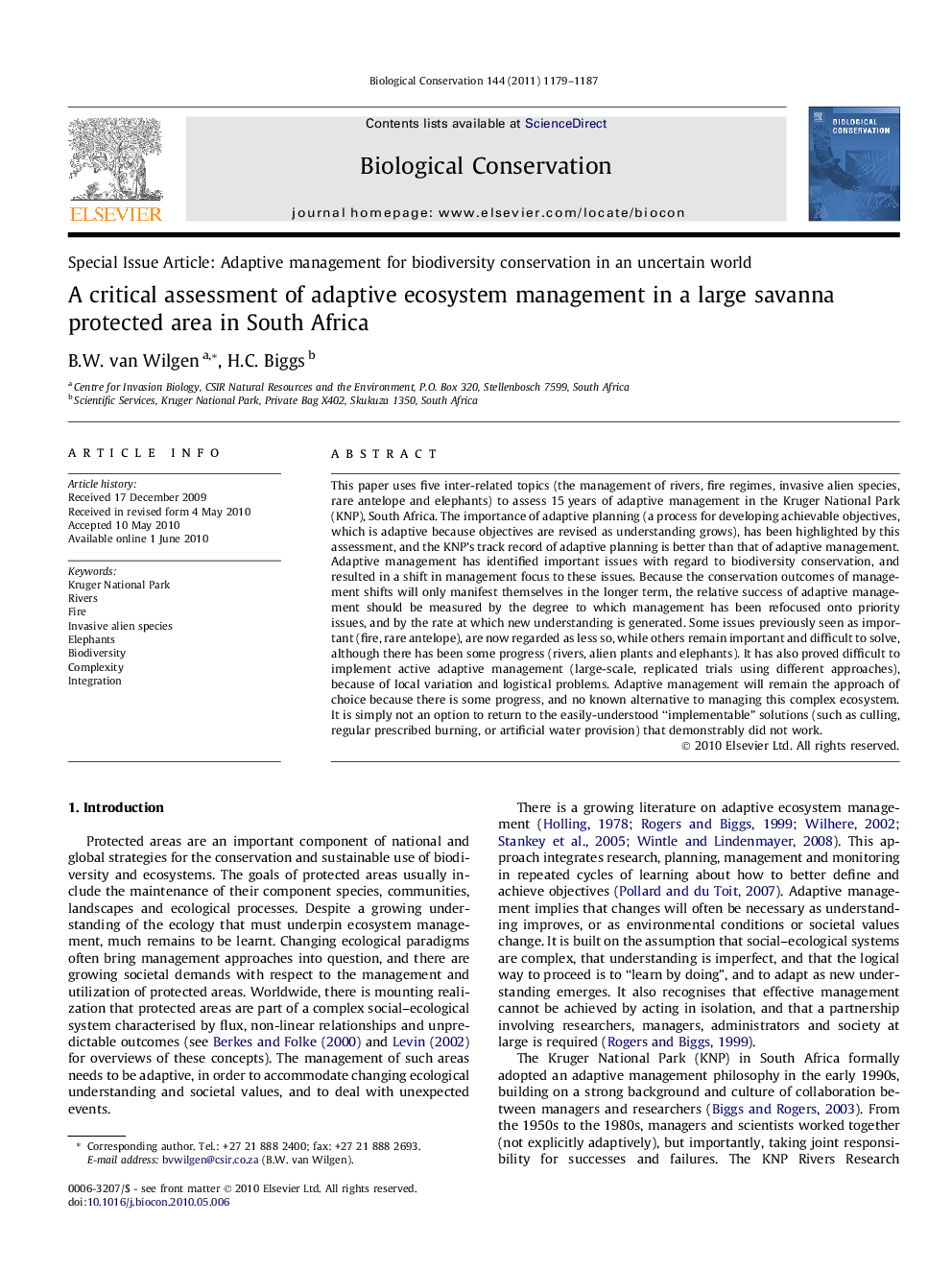| کد مقاله | کد نشریه | سال انتشار | مقاله انگلیسی | نسخه تمام متن |
|---|---|---|---|---|
| 4385599 | 1304544 | 2011 | 9 صفحه PDF | دانلود رایگان |
عنوان انگلیسی مقاله ISI
A critical assessment of adaptive ecosystem management in a large savanna protected area in South Africa
دانلود مقاله + سفارش ترجمه
دانلود مقاله ISI انگلیسی
رایگان برای ایرانیان
کلمات کلیدی
موضوعات مرتبط
علوم زیستی و بیوفناوری
علوم کشاورزی و بیولوژیک
بوم شناسی، تکامل، رفتار و سامانه شناسی
پیش نمایش صفحه اول مقاله

چکیده انگلیسی
This paper uses five inter-related topics (the management of rivers, fire regimes, invasive alien species, rare antelope and elephants) to assess 15Â years of adaptive management in the Kruger National Park (KNP), South Africa. The importance of adaptive planning (a process for developing achievable objectives, which is adaptive because objectives are revised as understanding grows), has been highlighted by this assessment, and the KNP's track record of adaptive planning is better than that of adaptive management. Adaptive management has identified important issues with regard to biodiversity conservation, and resulted in a shift in management focus to these issues. Because the conservation outcomes of management shifts will only manifest themselves in the longer term, the relative success of adaptive management should be measured by the degree to which management has been refocused onto priority issues, and by the rate at which new understanding is generated. Some issues previously seen as important (fire, rare antelope), are now regarded as less so, while others remain important and difficult to solve, although there has been some progress (rivers, alien plants and elephants). It has also proved difficult to implement active adaptive management (large-scale, replicated trials using different approaches), because of local variation and logistical problems. Adaptive management will remain the approach of choice because there is some progress, and no known alternative to managing this complex ecosystem. It is simply not an option to return to the easily-understood “implementable” solutions (such as culling, regular prescribed burning, or artificial water provision) that demonstrably did not work.
ناشر
Database: Elsevier - ScienceDirect (ساینس دایرکت)
Journal: Biological Conservation - Volume 144, Issue 4, April 2011, Pages 1179-1187
Journal: Biological Conservation - Volume 144, Issue 4, April 2011, Pages 1179-1187
نویسندگان
B.W. van Wilgen, H.C. Biggs,